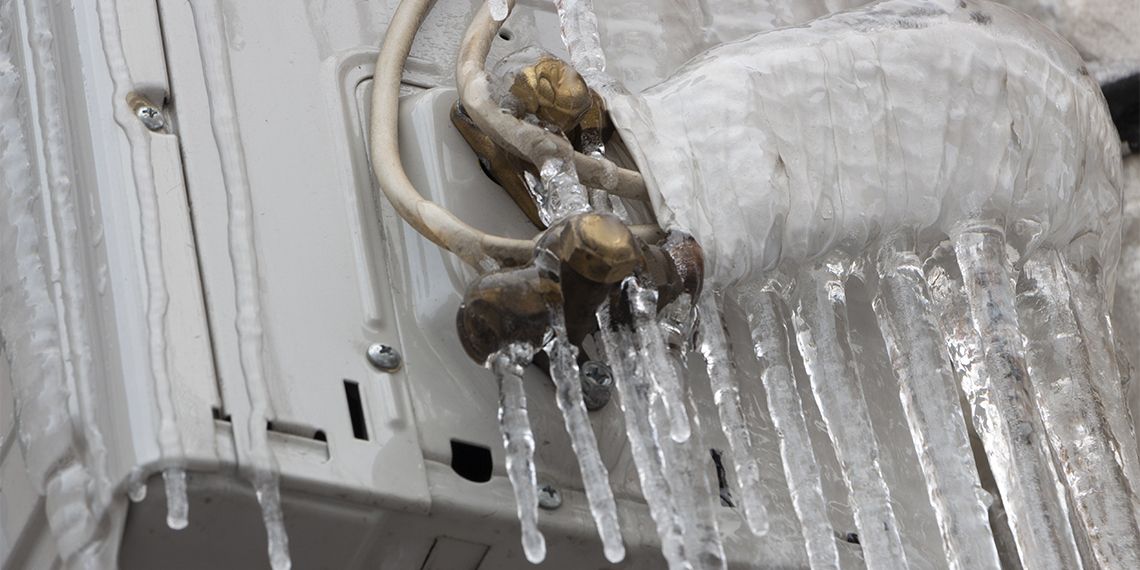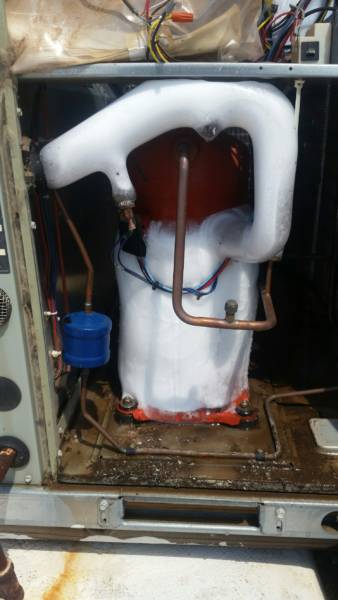Are you currently trying to locate critical information around What Causes AC Pipes To Freeze??

Introduction
Discovering that your air conditioning pipe is iced up can be worrying, specifically throughout warm summertime when you count on your ac system the most. Understanding what to do in such a scenario is critical to stop additional damages to your cooling system and guarantee your comfort inside.
Comprehending the Causes
Numerous variables can add to the cold of an air conditioning pipeline. Recognizing these causes can help you attend to the issue effectively.
Absence of Airflow
One common source of a frozen air conditioner pipeline is inadequate air flow. When the air movement over the evaporator coil is restricted, it can create the coil to drop below freezing temperature level, leading to ice formation on the pipeline.
Reduced Refrigerant Levels
Not enough refrigerant degrees in your AC system can likewise cause an icy pipe. Low cooling agent degrees can cause the pressure in the system to go down, leading to the freezing of wetness on the evaporator coil.
Winter Conditions
In cooler environments, freezing temperatures outside can contribute to the freezing of air conditioning pipes. If your air conditioning unit is not effectively shielded or if there are leakages in the ductwork, cool air can penetrate the system, creating the pipeline to ice up.
Dirty Air Filters
Filthy or stopped up air filters can restrict airflow in your AC system, leading to different issues, including an icy pipeline. It's important to replace or clean your air filterings system on a regular basis to make sure proper air movement and prevent ice build-up.
Indications of a Frozen AC Pipe
Identifying the indications of an icy a/c pipe is vital for prompt activity.
Decreased Airflow
If you see a significant decline in airflow from your vents, it can indicate a frozen pipeline.
Ice Buildup on the Pipe
Visible ice build-up on the refrigerant line or the evaporator coil is a clear sign of an icy air conditioning pipe.
Unusual Sounds from the Unit
Uncommon noises, such as hissing or gurgling, originating from your air conditioner device can signify that there's ice existing on the pipeline.
Immediate Actions to Take
When confronted with a frozen AC pipe, it's essential to act quickly to prevent more damages to your air conditioning system.
Shutting off the air conditioning
The primary step is to shut off your ac unit to avoid the system from running and intensifying the issue.
Looking for Blockages
Evaluate the area around the indoor unit for any kind of blockages that may be blocking air flow, such as furniture or curtains.
Thawing the Pipe
You can utilize gentle approaches like putting towels soaked in warm water around the frozen pipe to help thaw it gradually.
Preventive Measures
Taking preventive measures can help avoid future incidents of an icy AC pipeline.
When DIY Methods Fail
If your efforts to thaw the pipeline or address other concerns are not successful, it's time to contact a specialist.
Significance of Hiring a Professional HVAC Technician
A qualified HVAC specialist has the proficiency and devices necessary to diagnose and repair concerns with your AC system safely and properly.
Regular Maintenance Checks
Arrange routine upkeep checks with an expert HVAC service technician to make certain that your air conditioning system is running effectively.
Transforming Air Filters
Routinely change or cleanse your air filters to avoid air flow limitations and maintain optimal performance.
Insulating Exposed Pipes
If your air conditioner pipelines are revealed to chilly temperatures, think about insulating them to prevent cold throughout winter season.
Seeking Professional Help
If DIY methods fall short to resolve the concern or if you're not sure about just how to continue, it's best to look for support from a qualified HVAC professional.
Conclusion
Managing an icy air conditioning pipeline can be a discouraging experience, but understanding how to react can aid reduce damages and restore convenience to your home. By comprehending the reasons, recognizing the indications, and taking punctual action, you can efficiently resolve the issue and avoid future events.
Frozen AC Line: Why It Happens & What To Do About It
A frozen AC line can be a rather peculiar sight in a place like Phoenix, Arizona where nothing ever freezes. In this post, we’ll discuss what makes an air conditioner line frozen – and what you can do about it.
Dirty Air Filters
Did you know that you should be cleaning or replacing your air filters on a monthly basis? Failing to do this can result in airflow issues that, in turn, cause your evaporator coils and lines to freeze over. You’ll notice a buildup of ice on both components, although the buildup on your pipes will, of course, be more evident unless you open your air condition up to reveal the coils.
What To Do About It
Give your air filter a good cleaning if it’s reusable. If not, replace the filter outright. Next, switch your air conditioner’s fan setting on and leave it there for 2-3 hours. This will draw warm air in, helping to thaw your evaporator coil. You can also check out this article for some tips on cleaning the coils themselves if you’d like to speed the process up. Before you switch the unit back to its normal state, make sure the supply vents are completely unobstructed and free of dust or other debris.
If you keep having this issue even after replacing your filters regularly, contact a local HVAC repair company and have them inspect your evaporator coil, ductwork, and any other components that may be at fault. If you live in the Phoenix, Arizona area, give American Home Water and Air a call.
Low Refrigerant Levels/Leakage
What To Do About It
Contrary to what air conditioner “recharge” companies often tell their clients about refrigerant, it should never need to be simply refilled. You see, refrigerant runs in what experts refer to as a “closed loop.” Refrigerant really shouldn’t be leaving that loop. If it is, you’ve got a leak.
Paying someone to come and pump more refrigerant into your system (aka “recharge” it) isn’t the solution. Doing that will simply kick the can down the road. Besides, refrigerant leaks can be harmful to the environment and people in your home.
Rather, you need to take care of the leak with the help of a technician. Check out this article for some more information about dealing with air conditioners that are leaking refrigerant. Before you contact a technician, switch your thermostat to the off position. Then, switch the fan setting on and let it run for 2-3 hours so the unit can thaw.
Improper Temperature Setting
Improper temperature settings can also cause a drop in your air conditioner’s pressure. What many people don’t realize is that air conditioners are actually designed to run when temperatures have fallen above roughly 60 degrees Fahrenheit. If you run the unit when it’s cold outside, you’ll run into many issues, including frozen components.

As a passionate reader about Air Conditioner Frozen? How To Fix your Frozen AC Line, I think sharing that piece of content was important. Do you know about anybody else who is looking into How can I fix an air conditioner’s frozen pipe?? Take a moment to promote it. I truly appreciate reading our article about How can I fix an air conditioner’s frozen pipe?.
Call Today